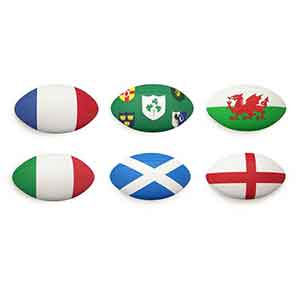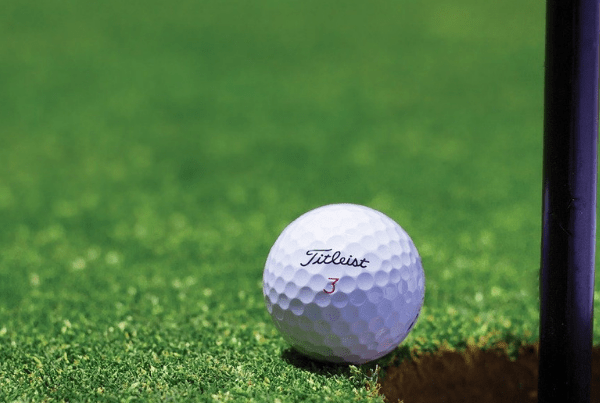Following on from the hugely successful 2019 Rugby World Cup in November, the annual Six Nations Championship is upon us once again. The annual championship is a must-watch for any Rugby Union fan. Wales go into the Six Nations Championship as the holders and one of the tournament favourites.
Here is a bit of history to provide some context as to how the championships have evolved over time. We’ve also included some interesting facts to whet your appetite. Enjoy!
What is the Six Nations Championship and who contests it?
The Six Nations Championship is one of the biggest tournaments in the rugby union calendar, certainly the biggest in the Northern Hemisphere. It brings together the best rugby union international sides in Europe. England, Wales, France, Ireland, Italy and Scotland compete for the well-respected championship trophy. Although participation is based on being the six highest-ranked teams in Europe, it is also based on previous membership.
England have won the most overall outright championships, spanning across all formats. They have 28 overall wins and 10 shared wins. This compares to Wales 27 outright wins and 12 shared wins.
It is known as the Guinness Six Nations in 2020 for sponsorship reasons.
When did the Six Nations Start?
The origins of the Six Nations go all the way back to 1871. This is when teams from England and Scotland played in the first-ever rugby union international match. This led to the creation of the Calcutta Cup in 1879 which was presented to the winners. The Calcutta Cup is still contested between the two countries each year.
The Home Nations Championship – 1883 to 1939
As the popularity of rugby union increased across Britain, other countries became interested in getting involved. Consequently, the Home Nations Championship was created in 1883 and contested between England, Scotland, Ireland and Wales. England won the first two tournaments, along with the Triple Crown and Calcutta Cup. The Home Nations ended in 1939 as the 2nd World War started. Wales and Scotland had won the most with 11 championships each.
The Five Nations – 1947 to 1999
France were added to the championship after the 2nd World War and won their first title in 1954 (which they shared with Wales and England). They won their first outright tournament in 1959 and performed well in the 1960s and 1970s, winning 8 championships in this period. Wales also dominated in the 1970s, winning 7 times during the decade.
It wasn’t until the 1990s that England came to the fore, winning the championship four times during the ’90s.
The Six Nations – 2000 to present
Italy were added to the mix at the turn of the millennium and won their first game. They haven’t performed particularly well since and have been awarded the wooden spoons an impressive 14 times!
Games are played across Europe in some of the world’s finest rugby stadia. England play at Twickenham which has an impressive capacity of 82,000; France at Stade de France which holds 81,338; Wales, Principality Stadium – 74,500; Rome, Stadio Olimpico – 72,698; Scotland, Murrayfield Stadium 67,144; and Ireland, Aviva Stadium – 51,700).
England have won the most Six Nations Championships (six times), compared to five for both Wales and France and four for Ireland.
What other trophies can be won during the Six Nations Tournament?
In addition to the Six Nations Championship trophy, there are a number of other competitions that take place during the tournament.
Grand Slam – The one everybody wants. This is won when one team beats all the other teams in the competition.
Calcutta Cup – Contested between England and Scotland. Named after the Calcutta Rugby Football Club. The members of the club melted down Indian rupees to make the cup.
Triple Crown Trophy – Awarded to the country that is victorious over all other home nations (Wales, England, Ireland and Scotland)
Millennium Trophy – Initiated in 1988 and contested between England and Ireland.
Doddie Weir Cup – First introduced in 2018 and competed between Wales and Scotland.
Auld Alliance Trophy – Introduced also in 2018, and competed between Scotland and France.
Giuseppe Garibaldi Trophy – Named after Italian national hero, Giuseppe Garibaldi. Contested between France and Italy.
Centenary Quiach Trophy – Contested between Ireland and Scotland.
The Wooden Spoon – The one that no team wants! It is awarded to the team who finishes last.
6 Interesting Six Nations Facts
- The six-sided trophy was introduced for the 2015 Championship. It’s made from Sterling Silver and took over 200 hours to make.
- The inside of the previous trophy (used between 1993 and 2015) was silver, but was replaced with 22-carat gold due to the erosion from all the Champagne being poured into it from the victors. The designers applied a lid to the new trophy to discourage drinking from it!
- Twickenham is the largest Rugby Union Stadium in the world with a capacity of 82,000. It started life as a Cabbage Patch and was purchased for £5,500 in 1907. It is estimated 160,00 pints of beer will be consumed each match!
- Going into the Six Nations 2020 championship, Scotland has the heaviest squad weighing in at over 4,200 KG. This is the equivalent to almost 500 Scottish terriers.
- Ronan O’Gara from Ireland is the highest points scorer with 551 points. Teammate Brian O’Driscoll is the highest try scorer with 26 tries. England fly-half Johnny Wilkinson holds claim to most points scored in a single match. He scored 35 points in England’s 80-25 victory over Italy in 2001. Those points alone would have been enough to win 147 of the 150 Six Nations games played.







